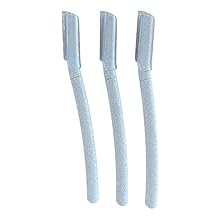
Getting to the root of it: How an Alberta scientist is changing the way farmers see soil
CBC
In a nondescript building tucked away in northeast Red Deer, the phone is ringing off the hook.
At least that's how Melissa Werkema, an upstart young scientist trained in Israel, describes how business has been since word spread about her new soil testing lab, which gives farmers from Alberta and across the country a whole new picture of what's going on beneath the surface.
Rod Olson, a regenerative agriculture specialist at a local co-operative YYC growers, has been talking up the lab and Werkema to anyone who will listen, especially in light of the challenges currently facing farmers.
A year ago, a heat dome wreaked havoc on crops and livestock across the Prairies.
While that memory still lingers in the minds of many, this growing season has been coloured by skyrocketing fertilizer and gas prices, in part due to Russia's invasion of Ukraine.
Olson hopes that Werkema's new ideas can help boost Alberta's readiness for heat waves of the future brought on by climate change, and create a better food system.
"Everybody can learn from Melissa. I come from an organic [farming background], but a conventional farmer can learn the same things and kind of adjust their practices … What [her work] does at the end of day is put farmers back in the driver's seat."
Werkema, 36, learned her soil testing techniques in Israel, where a three month archeological dig turned into a three year study of native plant nutrition.
She said that while conventional soil testing in Canada has stagnated, countries with less land and access to conventional fertilizers — like Israel and much of Europe — have faced more pressure to innovate.
"They get more creative in what to do. It's a very different way of thinking."
Where traditional soil tests measure just inorganic nutrients, Werkema said her tests measure primarily organic nutrients, or nutrients readily available for plants to absorb.
While plants need inorganic nutrients to survive, analyzing the organic nutrients present in soil gives a more general picture of overall soil health, and can determine what "missing links" exist that plants will need in the long-term.
This allows farmers to apply individually needed nutrients — copper for example — to fields in a tailor-made approach, instead of returning to a broad-spectrum fertilizer year after year.
Werkema said some of her clients have saved $40,000 to $60,000 this growing season alone on total fertilizer costs.





















 Run 3 Space | Play Space Running Game
Run 3 Space | Play Space Running Game Traffic Jam 3D | Online Racing Game
Traffic Jam 3D | Online Racing Game Duck Hunt | Play Old Classic Game
Duck Hunt | Play Old Classic Game











